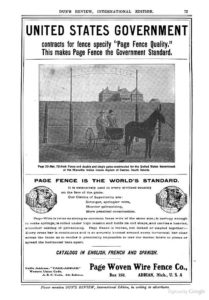One of the most heartbreaking–and frightening–aspects of treatment in an insane asylum was that so many patients probably were not insane. Native American patients at the Canton Asylum for Insane Indians were rarely evaluated by any competent medical person before they were committed. Powerless and misunderstood, they were often railroaded into the asylum for convenience or spite.
Many white patients undoubtedly suffered the same fate. Women were also politically and financially powerless, and many inconvenient women may have been committed to asylums at the pleasure of their spouses, fathers, or other legal guardians. Diaries and letters that women wrote spoke passionately about how terrible asylums were, and how the rigid routines, loss of freedom, and frightening environment, were enough to make any sane person lose her mind. A woman who had little experience of the world, or who perhaps had never left her home without an escort, would be terrified in an asylum. One can only imagine the stress levels these wronged patients endured.

Patient at Surrey County Asylum, circa 1855, courtesy the Royal Photographic Society Collection, National Media Museum
Diagnoses were also at fault. Medical conditions like epilepsy were considered a part of insanity, and patients who could be effectively treated today, would have spent their lives in insane asylums. Other reasons for commitment were just as tragic. Commitment papers for patients admitted to the Western North Carolina Insane Asylum in Morganton, North Carolina during the two years ending November 30, 1908 included reasons like:
— cigarette smoking
— desire to marry
— cocaine habit
— hard work and nose bleed
Though these diagnoses cannot tell the whole story, modern researchers have to wonder how much mental illness actually accompanied the patients’ conditions.


























